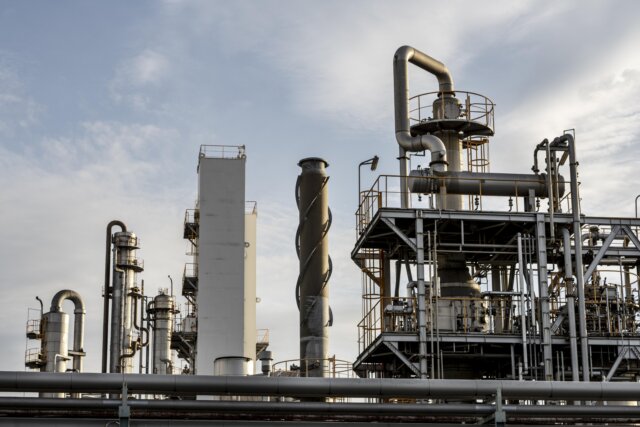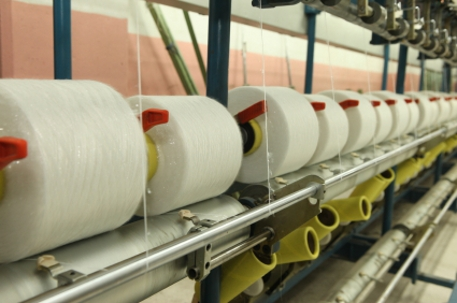Understanding the RFD full form in textile is crucial for professionals and learners in the textile industry. RFD stands for “Ready For Dyeing”, a term commonly used to describe fabric that has undergone pretreatment and is now suitable for dyeing or printing. RFD fabric ensures better dye uptake, consistent coloring, and higher-quality end products.
What is RFD Fabric?
RFD fabric is the result of a sequence of preparatory processes that remove impurities, natural oils, waxes, and sizing agents from grey or raw fabric. This step is essential before fabric can effectively undergo dyeing or printing. By ensuring that the fabric is clean and absorbent, the dyeing results are more vibrant and uniform.
Key Steps in the RFD Process
The RFD full form in textile is associated with a comprehensive pretreatment process that typically includes:
Desizing
This removes the sizing agents applied during weaving, usually through enzymatic or oxidative methods.
Scouring
Scouring eliminates natural fats, oils, and waxes from the fiber, enhancing its hydrophilicity.
Bleaching
Bleaching improves fabric whiteness by removing natural color and impurities, making it ready for dye absorption.
Importance of RFD in Textile Industry
RFD fabric plays a vital role in achieving superior dyeing and printing outcomes. The benefits include:
- Improved Dye Uptake: Clean, absorbent fabric ensures even dye penetration.
- Enhanced Fabric Quality: RFD fabrics have a smoother texture, reduced staining, and better performance in printing.
- Cost Efficiency: Reducing reprocessing due to dye defects or irregularities.
The RFD full form in textile also signifies a fabric stage where quality checks ensure the material meets the dye house’s standards for further processing.
Applications of RFD Fabric
RFD fabric is used widely in various segments of the textile industry:
- Apparel Manufacturing: For T-shirts, dresses, and garments requiring precise color matching.
- Home Textiles: In items like bed sheets, curtains, and table linens.
- Technical Textiles: Where color consistency and fabric stability are critical.
LSI Keywords and Related Terms
To better understand the concept, it’s useful to explore related terms such as “fabric pretreatment”, “grey fabric processing”, “textile dyeing process”, and “fabric finishing techniques”. These help clarify the steps leading up to and following the RFD stage.
Final Thoughts
In summary, the RFD full form in textile — Ready For Dyeing — is more than just a term; it’s a critical step in textile manufacturing that ensures high-quality dyeing results. Whether you’re a student, manufacturer, or enthusiast, understanding RFD fabric gives insight into the broader textile production process.
Would you like a diagram or visual aid to accompany this article?
What is the difference between RFD and PFD fabric?
The difference between RFD (Ready for Dyeing) and PFD (Prepared for Dyeing) fabric lies mainly in their treatment process and end-use readiness, although they are often used interchangeably in casual usage.
 Key Differences Between RFD and PFD Fabric:
Key Differences Between RFD and PFD Fabric:
| Feature | RFD (Ready for Dyeing) | PFD (Prepared for Dyeing) |
|---|---|---|
| Definition | Fabric that has been fully treated and is ready to accept dye evenly | Fabric that has been cleaned and bleached but may need final treatment before dyeing |
| Processing Level | More thoroughly pre-treated (desized, scoured, bleached) | Prepared but sometimes needs further prepping |
| Use in Industry | Preferred when high-quality dyeing is critical | Often used for garments or basic dyeing jobs |
| Consistency | Higher uniformity in dye uptake | May have slight variation depending on treatment |
| Common Use | Premium textiles, printing, high-end fashion | Mass production, basic dyeing, sampling |
| Appearance | Clean white or off-white, smooth feel | Similar in appearance but might be slightly rawer |
 What They Have in Common:
What They Have in Common:
- Both are undyed and untreated for color.
- Both undergo desizing, scouring, and bleaching to remove waxes and impurities.
- Both are used in fabric printing, dyeing, and garment manufacturing.
Summary:
- RFD: Fully processed, immediately dye-ready with uniform results — ideal for professional dyeing and printing.
- PFD: Cleaned and prepped, but may require minor finishing — often used in commercial production where extreme precision isn't as critical.
What is the full form of CFR in textile?
In textiles, CFR stands for Cost and Freight.
 CFR (Cost and Freight) – Meaning in Textile Trade:
CFR (Cost and Freight) – Meaning in Textile Trade:
CFR is an Incoterm (International Commercial Term) used in international trade, including the textile industry. It indicates that:
- The seller pays for the cost of goods and the freight to bring them to the destination port.
- The buyer is responsible for insurance and unloading once the goods arrive.
Example in Textile Use:
If a textile exporter sells fabric on CFR Mumbai terms, they:
- Pay for transporting the fabric up to the Mumbai port.
- Do not cover insurance or inland delivery beyond the port.
 Related Incoterms in Textile Trade:
Related Incoterms in Textile Trade:
- FOB – Free on Board
- CIF – Cost, Insurance, and Freight
- EXW – Ex Works
What is the difference between greige and RFD fabric?
The key difference between greige and RFD (Ready for Dyeing) fabric lies in their stage of processing:
 1. Greige Fabric (pronounced gray)
1. Greige Fabric (pronounced gray)
- Definition: Raw, unfinished fabric straight from the loom or knitting machine.
- Processing:
- Not cleaned – still contains natural oils, waxes, starch, dust, or loom oil.
- Not bleached or dyed.
- Appearance: Off-white, dull, sometimes with visible impurities.
- Use: Must undergo further processes like desizing, scouring, bleaching, and dyeing before being used in garments or printing.
 2. RFD Fabric (Ready for Dyeing)
2. RFD Fabric (Ready for Dyeing)
- Definition: Fabric that has been fully pre-treated and cleaned — it’s ready to accept dye uniformly.
- Processing Includes:
- Desizing – removes sizing agents (starch or resin).
- Scouring – removes oils, waxes, and impurities.
- Bleaching – gives the fabric a clean white/off-white base.
- Appearance: Brighter white, clean, soft hand feel.
- Use: Ideal for dyeing, printing, or finishing without further pre-treatment.
 Key Differences at a Glance:
Key Differences at a Glance:
| Feature | Greige Fabric | RFD Fabric |
|---|---|---|
| Processing Level | Raw, untreated | Fully pre-treated (scoured & bleached) |
| Dyeing Readiness | Not suitable for dyeing yet | Immediately dyeable |
| Appearance | Dull, possibly dusty | Clean white/off-white, smooth texture |
| Cost | Cheaper | Slightly more expensive due to treatment |
| Use in Production | First stage of textile processing | Used in dyeing, printing, finishing |
Summary:
- Greige = raw fabric
- RFD = cleaned, dye-ready fabric
Meena Ansari is the co-founder and business partner at M/s Tex Aux Chemicals. A passionate writer at heart, she brings a deep curiosity and love for learning to every aspect of the textile industry. With a keen interest in exploring innovations and sharing insights, Meena combines her entrepreneurial experience with a flair for storytelling to educate and inspire readers across the textile community.
- Meena Ansarihttps://textilelisting.com/author/textilelisting/
- Meena Ansarihttps://textilelisting.com/author/textilelisting/
- Meena Ansarihttps://textilelisting.com/author/textilelisting/
- Meena Ansarihttps://textilelisting.com/author/textilelisting/





